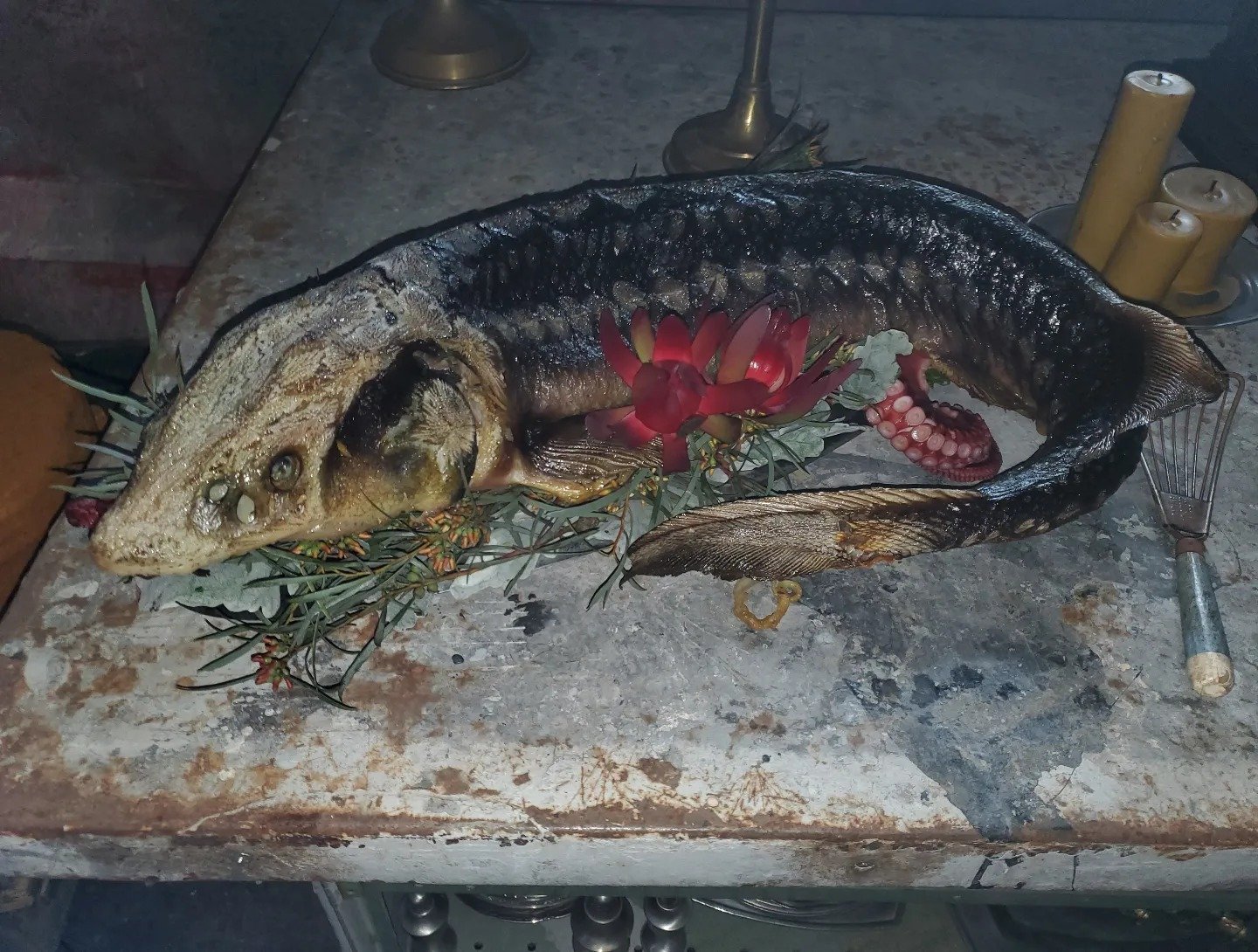Carol Badaracco Padgett is an Atlanta freelance writer who specializes in film and television coverage. A graduate of the University of Missouri School of Journalism, her work has appeared in publications nationwide.
Horror film food stylist Elizabeth Grove, owner of Atlanta’s Edible FX, makes a vegan cockroach that squirts white goo when you bite into it. It’s one of the top nasty yet fabulous film foods Grove has created that probably sickens her as much as it does the viewer and the talented actor who takes a chomp.
Grove started out working with pretty food, however — waiting tables for 14 years and studying culinary arts in Santa Monica, California. She then scored a gig working as a master chef for Food Network as part of the food styling crew that set up the show. At the same time, she was a caterer and provided craft service — the snacks in between meals — for various industries in Los Angeles.
“You have to be good at more than one thing,” says the chef, regarding lessons learned early in her career. “One job will always go away, and you’ll have to have something else you’re good at to make money.”

Some 15 to 20 years ago, she realized she had an affinity for food styling for film and TV.
“I loved each little world that was created every day. I had to move with how the script was written and what they were asking for,” she says. Fortunately, settings and scenes with food play out heavily on screen.
“In Pretty Little Liars, it was a cafeteria in a school, and when I worked on Grey’s Anatomy for five years, it was the cafeteria in the hospital.”
After a time, people in the film and TV world began asking her to make food look rotten.
“Productions wanted to buy the stuff,” Grove notes. “If CGI comes in and the food is fake, that’s gonna cost around 10 grand, so if your price is under that and you cost less [as a food stylist], you get the job.”
Real food is better in a scene anyway, she finds, because it’s textural in the shot.
“It took off from there — bugs, grubs, rotten food — a kid comes in from a blizzard with snot on his face and breaks it off and eats it,” Grove describes. “Then it started getting weirder and weirder.”
Grove’s favorite series to work on so far is Netflix’ Stranger Things.
“It’s so groundbreaking and such a hit, and I got to flex and do what I do as an artist,” she says.
That includes styling food for the show’s 1980s time period and envisioning what would happen to food when it goes into “the upside down.”
“The crazy script allows me to play around visually with food,” says Grove. “It’s not your traditional gorgeous plate, but you had to rig it and solve problems.”
In the process of problem-solving, the food stylist has become a woodworker and collector of all sorts of antiques and odd things, which are useful on set. For example, Grove crafted a one-of-a-kind crudités Christmas tree from a piece of cypress wood she found in her treasure hunts, knowing one day it would make its way onto film.
She’s also into ceramics and glass blowing so she can create the vessels her food appears in on film and TV as needed.
“When you learn how to build and grow, you consume less,” the food stylist remarks, remembering a scrap metal yard find that became the centerpiece in a Zac Efron film.
Even everyday things like epsom salts make excellent ice on screen, and you can just safely dump it out on the ground afterward, she says.
In addition to being environmentally conscious, Grove is conscious of history.
“As a food stylist for film and TV, you have to consider ages, eras, etc. The state or region will determine what the food looks like. Is this a poor family, ultra-rich or are these immigrants?”
She adds as an example: “The hair and makeup are right in line with the period, and the food can’t be wrong. You can’t use a type of grape that wasn’t out yet. Foodies and historians will slaughter you.”

Today, Grove finds that her life experiences have all merged to bring her to where she is in her career, styling food for everything from the remake of Roots to four seasons of Shameless, Ghosted, First Ladies and Beyonce’s Lemonade tour, where the food had to match 1890s couture.
She spent six years in four countries as well, including Malaysia, Vietnam, Australia and United Arab Emirates — and she speaks three languages. All these experiences, Grove says, have proven useful and helpful in her work in film.
Going back to the gore Grove has become known for, today she has a patent on her potion for blood. She can’t share what’s in it, of course, but it washes out of anything it spills on and it comes in different colors because “blood is bright red when it shoots out, but, later on, the appearance of blood changes.”
The blood is vegan, too, because sometimes scripts call for an actor to drink it — like they did in a certain Anne Rice TV series. Filmed in New Orleans, the first season of Interview With the Vampire features food styling by Elizabeth Grove.
::

